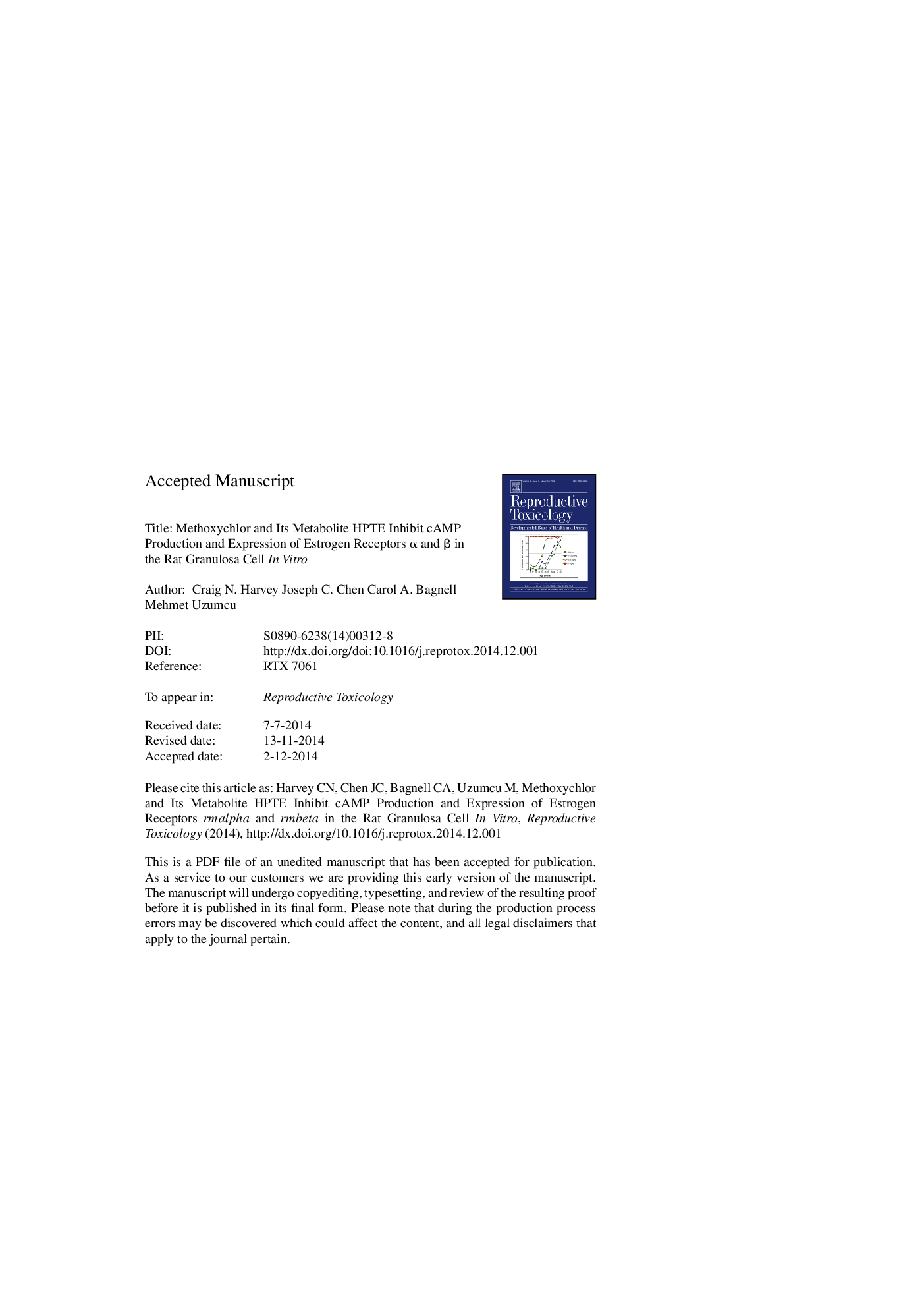| Article ID | Journal | Published Year | Pages | File Type |
|---|---|---|---|---|
| 5858367 | Reproductive Toxicology | 2015 | 28 Pages |
Abstract
The major metabolite of the estrogenic pesticide methoxychlor (MXC) HPTE is a stronger ESR1 agonist than MXC and acts also as an ESR2 antagonist. In granulosa cells (GCs), FSH stimulates estradiol via the second messenger cAMP. HPTE inhibits estradiol biosynthesis, and this effect is greater in FSH-treated GCs than in cAMP-treated GCs. Therefore; we examined the effect of MXC/HPTE on FSH-stimulated cAMP production in cultured GCs. To test involvement of ESR-signaling, we used the ESR1 and ESR2 antagonist ICI 182,780, ESR2 selective antagonist PHTPP, and ESR2 selective agonist DPN. ESR1 and ESR2 mRNA and protein levels were quantified. Both HPTE and MXC inhibited the FSH-induced cAMP production. ICI 182,780 and PHTPP mimicked the inhibitory action of HPTE. MXC/HPTE reduced FSH-stimulated Esr2 mRNA and protein to basal levels. MXC/HPTE also inhibited FSH-stimulated Esr1. The greater inhibition on FSH-stimulated GCs is likely due to reduced cAMP level that involves ESR-signaling, through ESR2.
Keywords
Related Topics
Life Sciences
Environmental Science
Health, Toxicology and Mutagenesis
Authors
Craig N. Harvey, Joseph C. Chen, Carol A. Bagnell, Mehmet Uzumcu,
